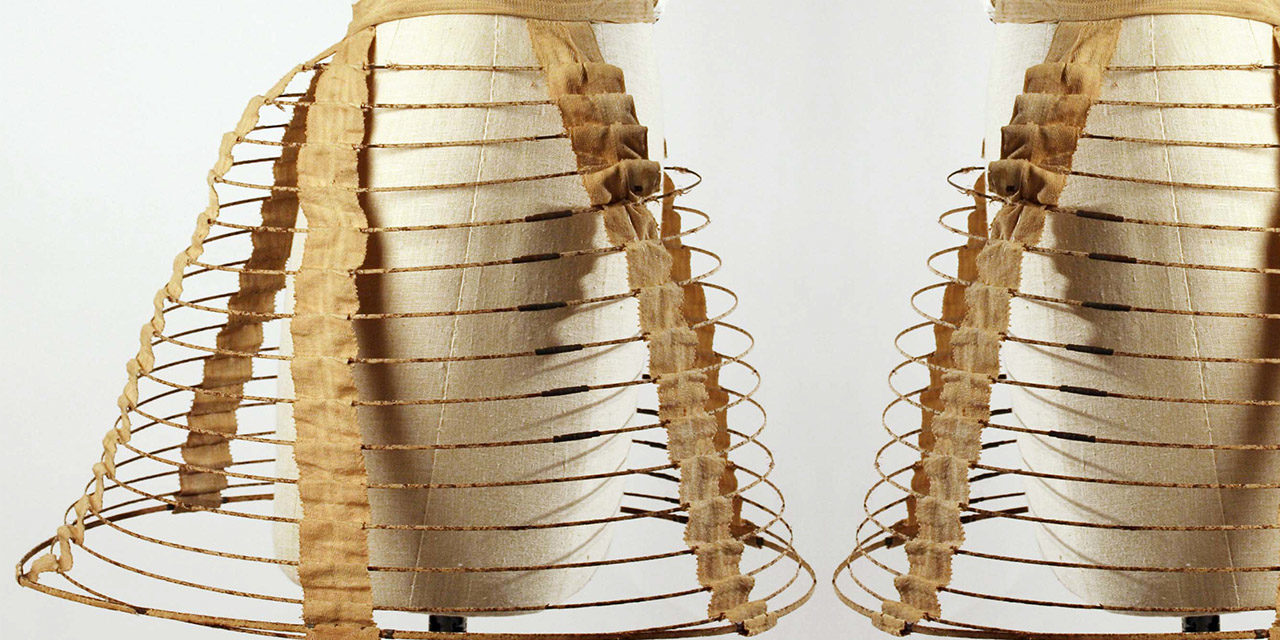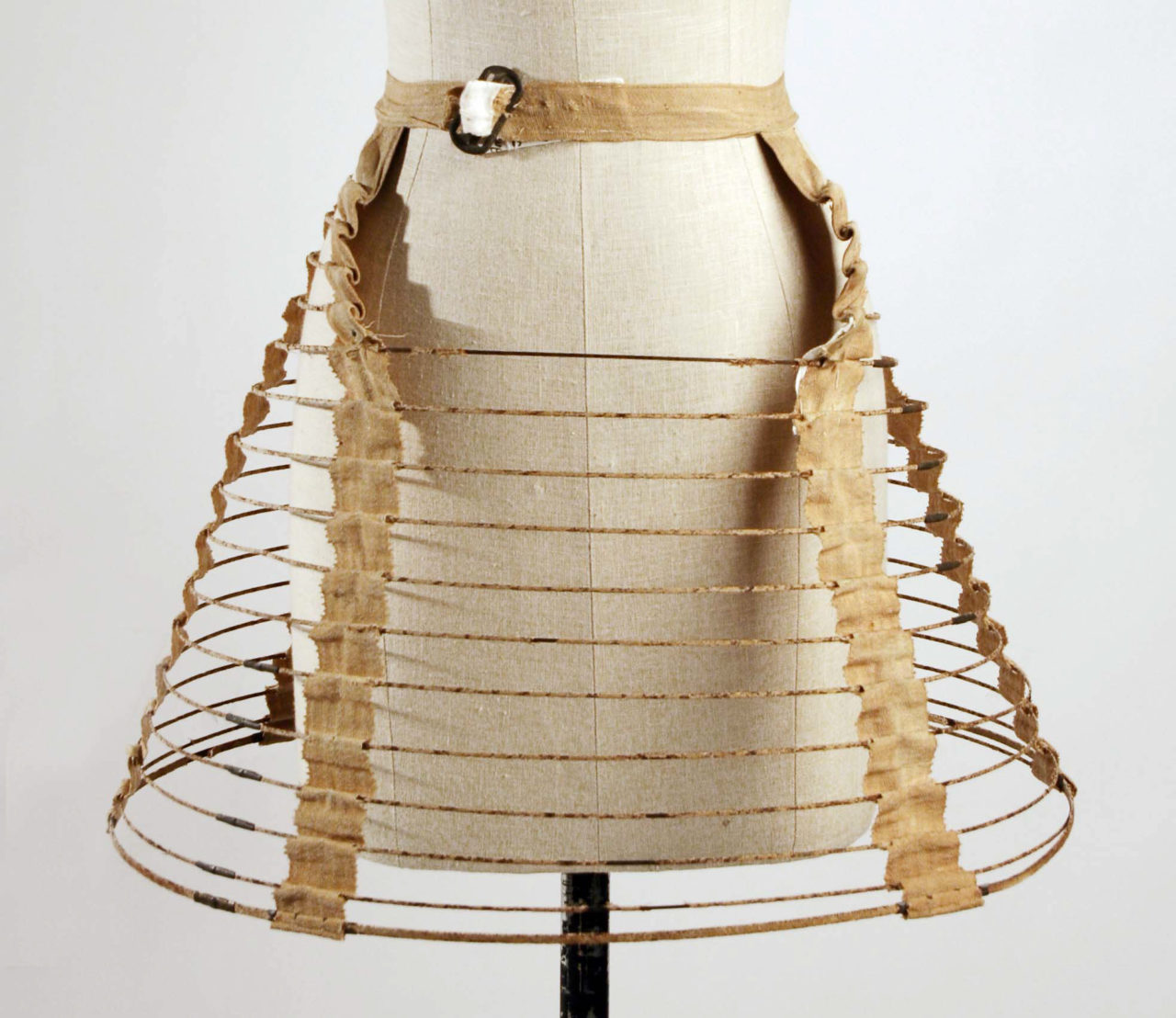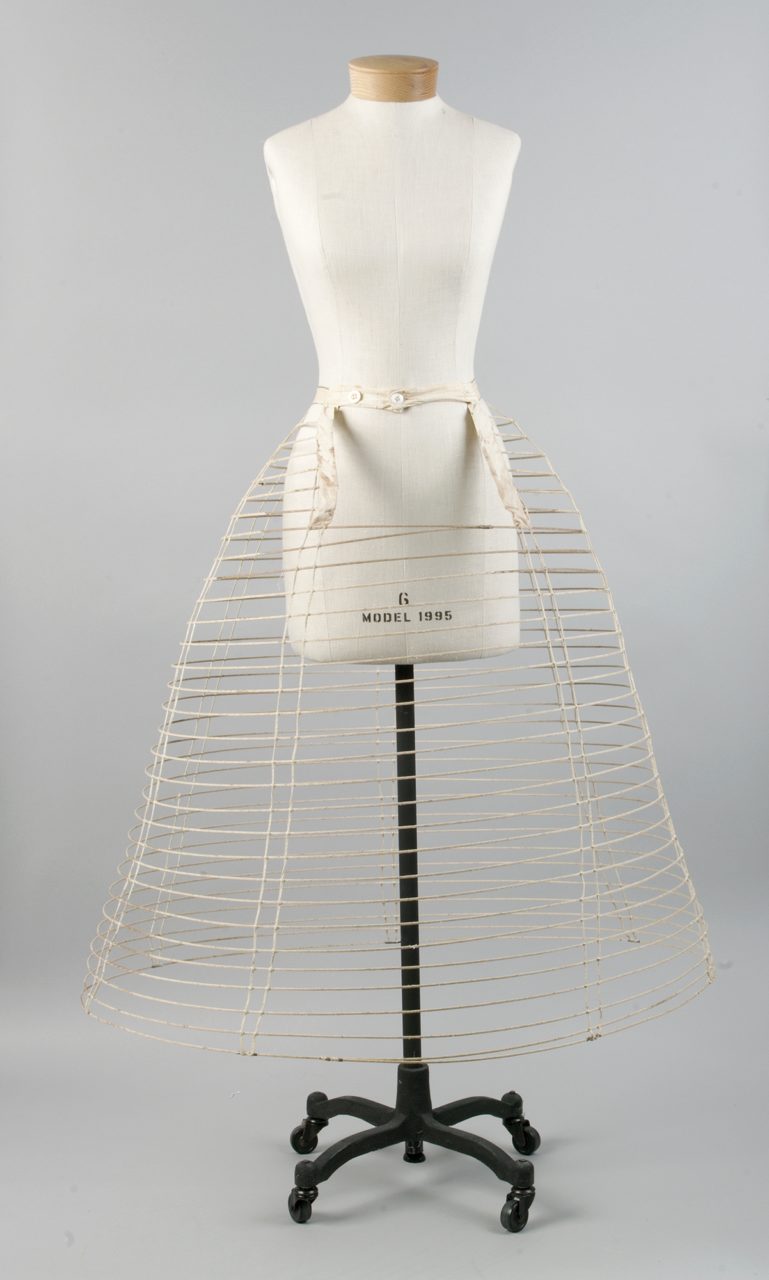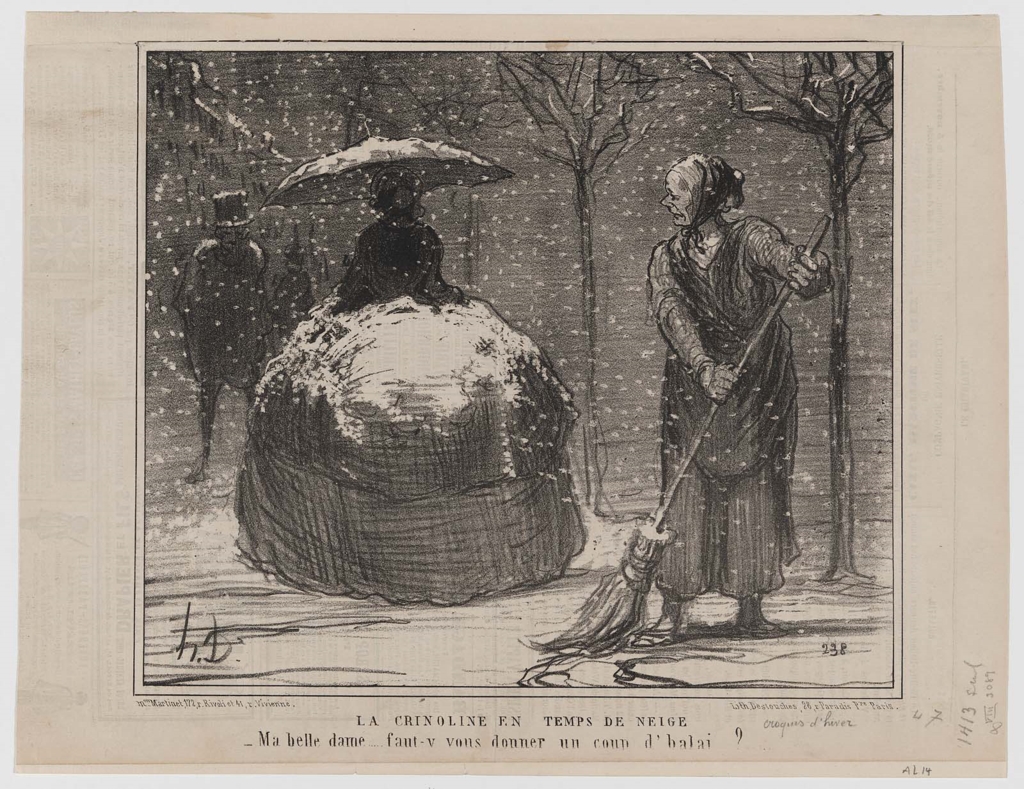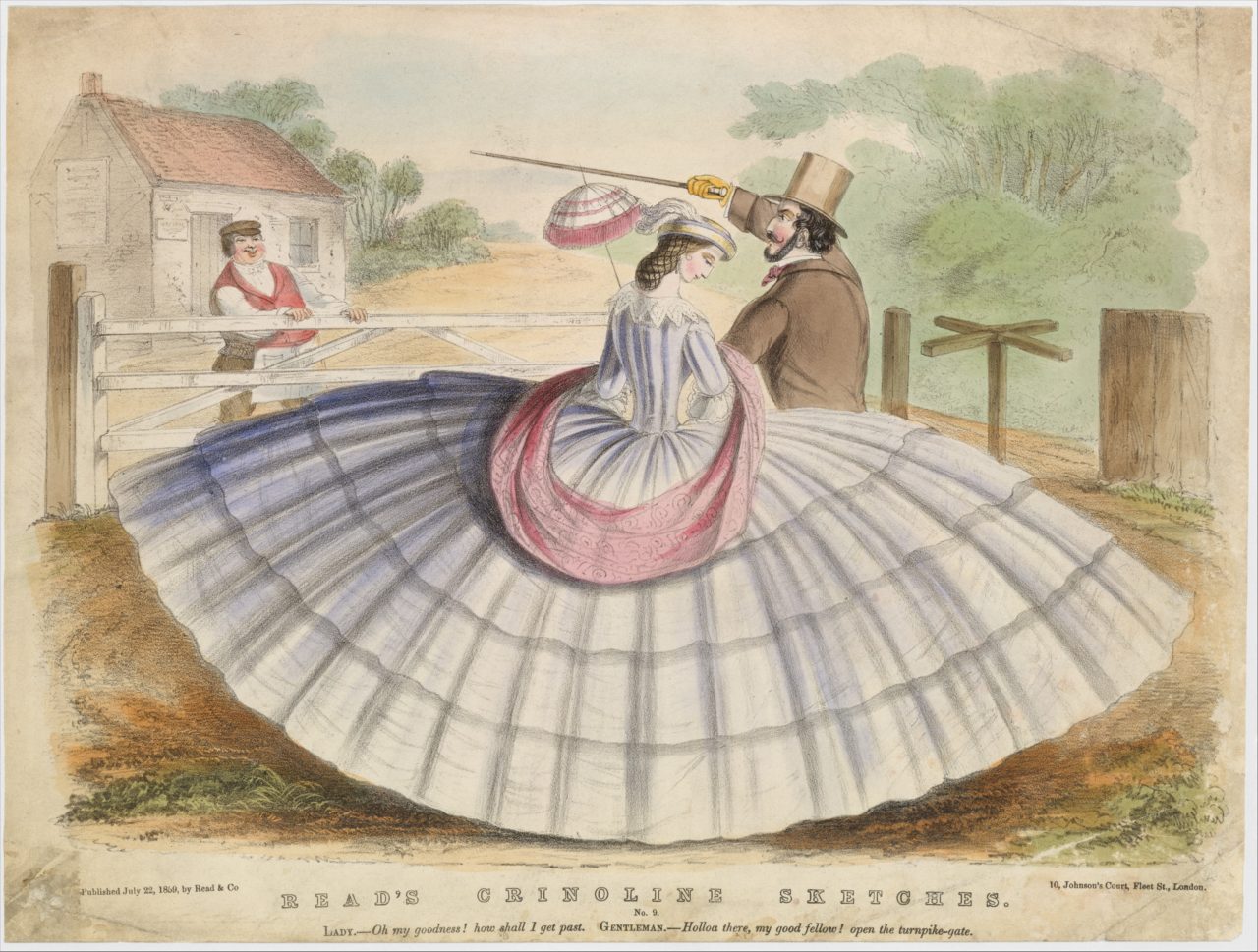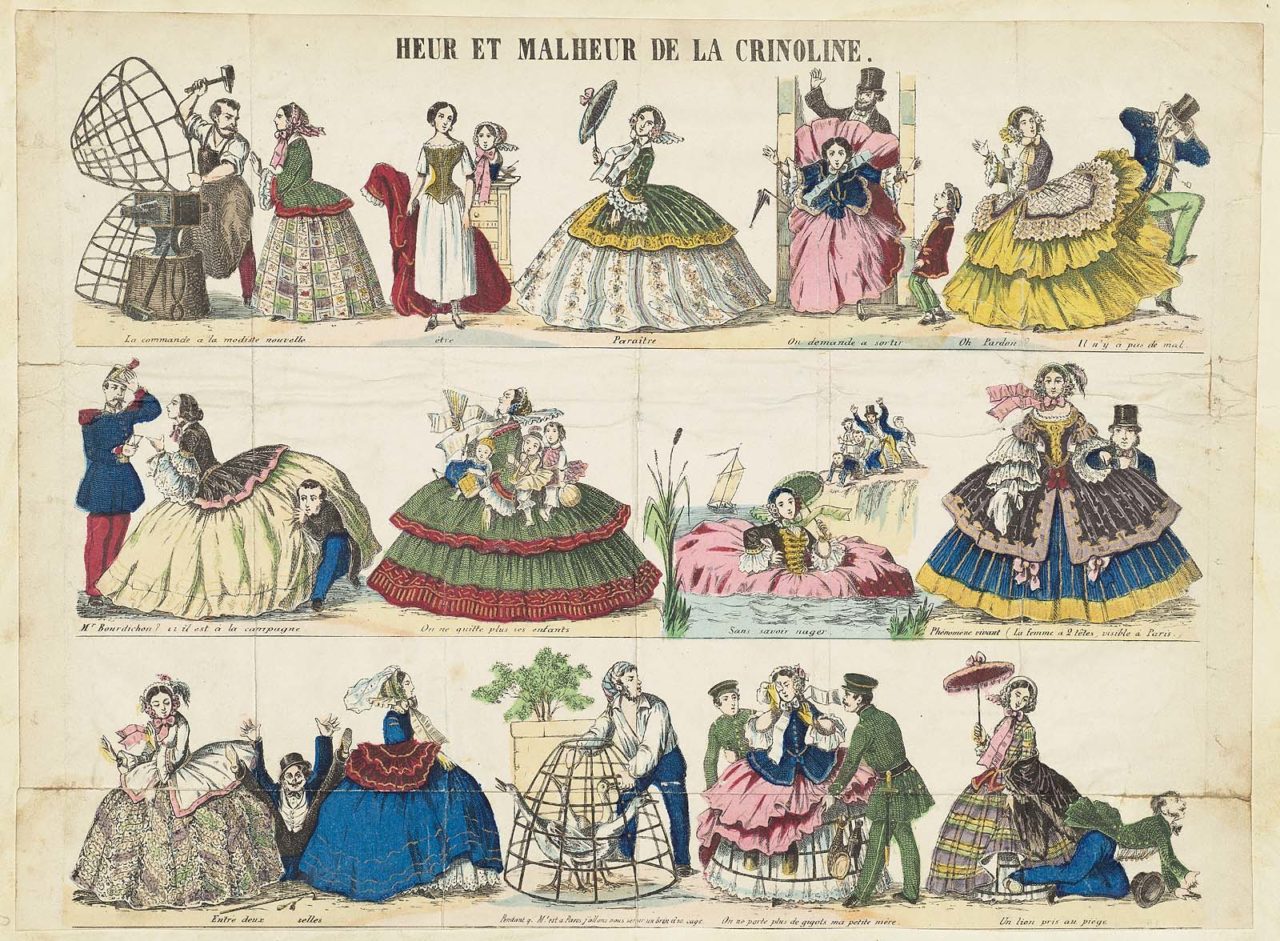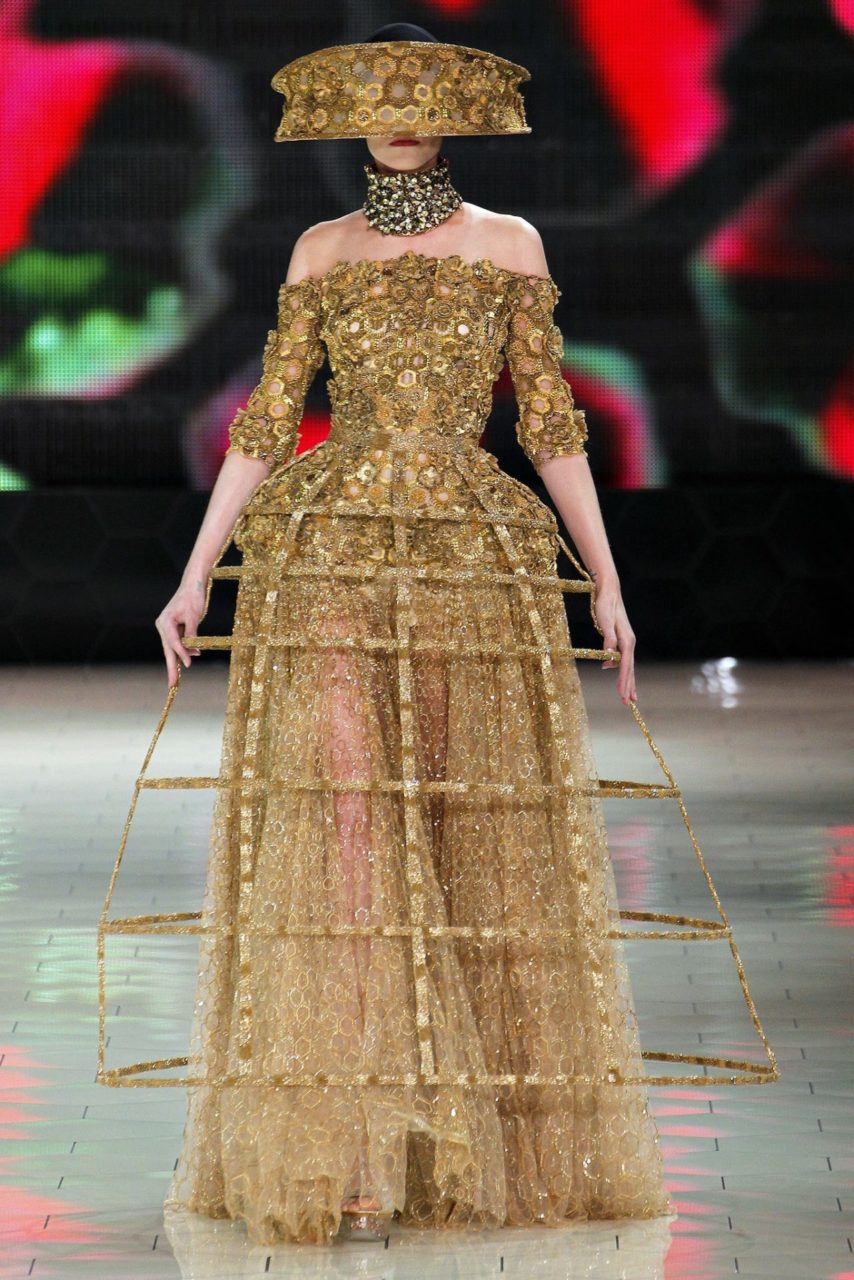A hooped cage worn under petticoats in the 19th century to stiffen and extend the skirt.
The Details
L
iana Satenstein of Vogue magazine summarizes the cage crinoline as “a cousin of the pannier, the crinoline resembled a round skeleton cage that expanded the volume of a silhouette.”
The Met’s display of cage crinolines on dress-forms show the emphasized bell-shaped silhouette that the crinoline creates (Figs. 1-2).
Phillyis G. Tortora in The Fairchilds Books Dictionary of Fashion (2014) defines the crinoline/hoop as:
“A framework consisting of round/oval circles (shaped like a hoop) of whalebone, wire, or cane used to extend the skirt.” (415)
Valerie Cumming in The Dictionary of Fashion History describes the emergence of the wire and tape style crinolines seen in figures 2 & 3 from the original crinolines made of horsehair:
“A new material made of horsehair. Soon after it became a fabric of horsehair and cotton, used to make stiff under-petticoats. By 1856 the name was commonly applied to the “Artificial crinoline” or hoop, at first of whalebone and then of wire or watch-spring, containing a large number of circular hoops held together by fabric or tapes.”
One of the first mass-produced and most widely adopted fashions, the cage crinoline was worn at all levels of society. Usually worn with corsets, the 19th-century fashion for crinolines emphasized tiny waists as the beauty ideal.
The Encyclopedia of Clothing and Fashion (2005) describes that ideal:
“In the mid-nineteenth century, the ideal feminine figure was an hourglass above a broad base of full skirts. Wide skirts, which made the waist look smaller and were thought to give women dignity and grace.” (Haugland 317)
Honoré Daumier’s 1858 caricature, La Crinoline en temps de neige (Fig. 3), shows a woman walking in the snow with her expansive crinoline beginning to accumulate snow and resemble a snow man; a street-sweeper asks, “My beauty…do I need to give you a sweep?” A caricature from a year later again makes fun of the immense expanse of skirts the crinoline made possible (Fig. 4). It became a very common theme for caricature (Fig. 5).
Fig. 1 - Maker unknown (American). Cage Crinoline, 1857. Steel, cotton. New York: The Metropolitan Museum of Art, C.I.53.72.15. Gift of Mrs. William R. Witherell, 1953. Source: The Met
Fig. 2 - Maker unknown (American). Cage Crinoline, 1860. Metal, cotton. New York: The Metropolitan Museum of Art, 1986.180. Purchase, Irene Lewisohn Bequest, 1986. Source: The Met
Fig. 3 - Honoré Daumier (French, 1808–1879). La Crinoline en temps de neige, 1858. Lithograph, second state; 26.5 x 34.3 cm (10 7/16 x 13 1/2 in). Boston: Museum of Fine Arts, 63.1951. Bequest of W. G. Russell Allen. Source: Museum of Fine Arts
Fig. 4 - Artist unknown (British). Read's Crinoline Sketches, No. 9, July 22, 1859. Hand-colored lithograph; 28.6 x 37.5 cm (11 1/4 x 14 3/4 in). New York: The Metropolitan Museum of Art, 63.617.10. The Elisha Whittelsey Collection, The Elisha Whittelsey Fund, 1963. Source: The Met
Fig. 5 - Artist unknown (French). Heur et malheur de la crinoline, 1858. Engraving on paper; 27.2 x 36.5 cm (10 11/16 x 14 3/8 in). Boston: Museum of Fine Arts, 59.700. Gift of Mrs. Jason Westerfield. Source: Museum of Fine Arts
Its Afterlife
As we know fashion is evolutionary not revolutionary, therefore it recycles itself but with new improvements. Satenstein in Vogue notes that the crinoline “experienced a resurgence in 1948 thanks to Dior’s New Look (this time sans metal hoops).”
More recently Alexander McQueen’s Spring 2013 RTW show featured an exterior crinoline cage (Fig. 6) and a crinoline-inspired runway look appeared in Jean Paul Gaultier’s Fall 2014 Couture show (Fig. 7).
Fig. 6 - Alexander McQueen (British, 1969-2010). Ready to Wear, Spring 2013. Photograph by Monica Feudi. Source: Vogue
Fig. 7 - Jean Paul Gaultier (French, 1952-). Couture, Fall 2014. Photograph by Yannis Vlamos & Fabia Iona. Source: Vogue
References:
- “Crinoline,” Wikipedia, https://en.wikipedia.org/w/index.php?title=Crinoline&oldid=741895736 (accessed October 4, 2016).
- Cumming, Valerie, C. W. Cunnington, and P. E. Cunnington. “Crinoline.” In The Dictionary of Fashion History, 59. Oxford: Berg Publishers, 2010. Accessed September 29, 2017. https://www.bloomsburyfashioncentral.com/products/berg-fashion-library/dictionary/the-dictionary-of-fashion-history/crinoline.
- Haugland, H. Kristina. “Crinoline.” Encyclopedia of Clothing and Fashion. Ed. Valerie Steele. Vol. 1. Detroit: Charles Scribner’s Sons, 2005. 317-318. Web. 3 Oct. 2016. http://www.worldcat.org/oclc/963977000.
- Satenstein, Liana. “Fashion Word of the Day: What Ladies in the 1800s Hid Under Their Skirts.” Vogue. Accessed August 14, 2018. https://www.vogue.com/article/fashion-word-of-the-day-crinoline.
- Tortora, Phyllis G, and Sandra J Keiser. The Fairchild Books Dictionary of Fashion. 4th ed. New York: Fairchild Books, 2014. http://www.worldcat.org/oclc/900349357.

